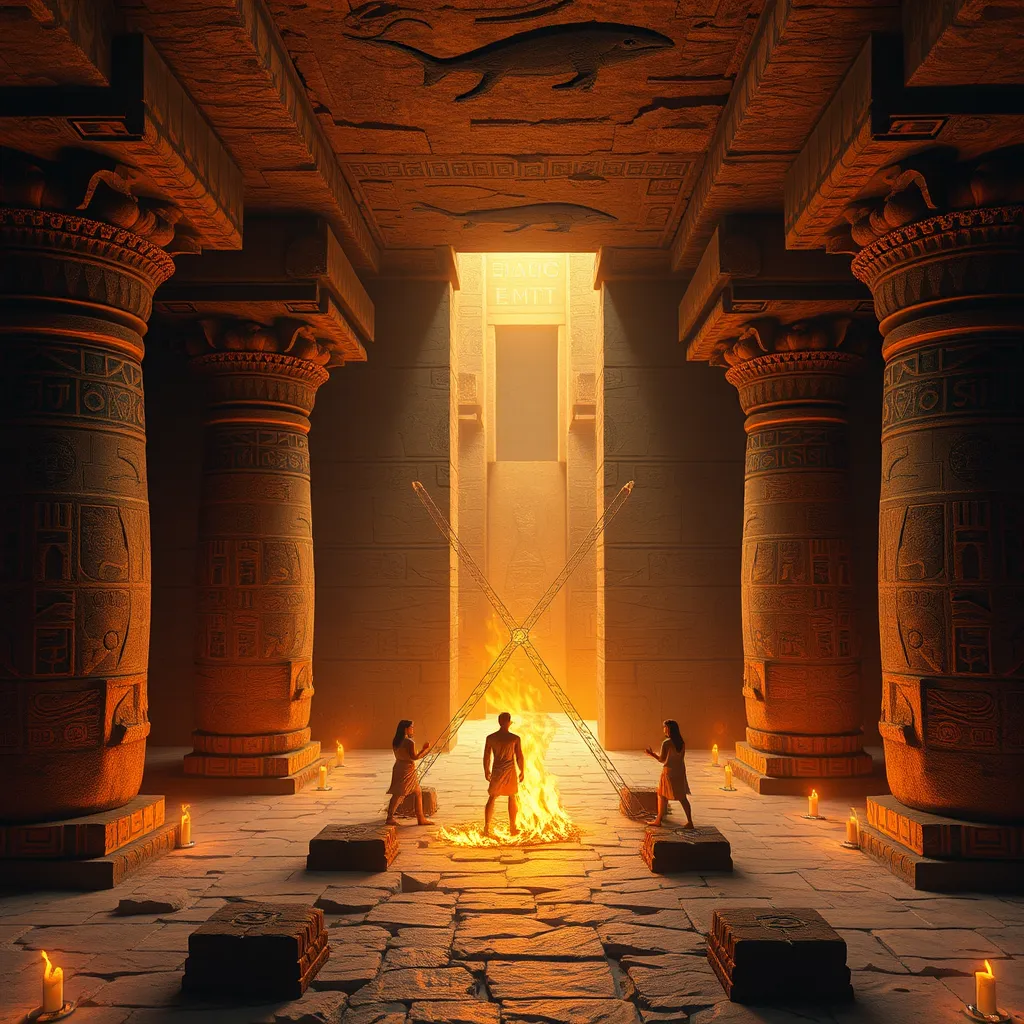The Duat: Exploring the Myths and Legends of the Egyptian Underworld
I. Introduction to the Duat
The Duat, often referred to as the Egyptian underworld, is a pivotal concept in ancient Egyptian beliefs. It represents the realm of the dead, a mystical place where souls journey after death. The Duat is not merely a place of darkness; it is a complex landscape filled with both dangers and opportunities for the soul’s journey toward the afterlife.
In ancient Egyptian mythology, the underworld is a vital aspect of the cycle of life and death. The Egyptians believed in an afterlife that mirrored the earthly existence, making the Duat a significant element of their spiritual and religious beliefs.
II. The Geography of the Duat
The Duat is often depicted as a vast, mysterious realm consisting of various landscapes and realms. It is described in texts and inscriptions as a place filled with rivers, fields, and mountains, where the soul must navigate through different regions to reach the afterlife.
- The River of Night: A dark river that souls must cross, often depicted with serpents and other dangers lurking beneath the surface.
- The Field of Reeds: A paradise for the blessed souls, resembling the lush fields of Egypt, where one could enjoy eternal peace.
- The Hall of Judgment: The location where souls are judged by Osiris, the god of the afterlife, to determine their fate.
Each of these locations within the Duat holds specific significance, representing various stages of the soul’s journey and the challenges they must overcome.
III. Deities and Entities of the Duat
The Duat is inhabited by numerous gods and goddesses, each playing a crucial role in the afterlife process. Key deities associated with the Duat include:
- Osiris: The god of the afterlife, resurrection, and agriculture, Osiris is the central figure in the judgment of souls.
- Anubis: The god of mummification and the protector of graves, Anubis guides souls through the Duat and oversees the weighing of the heart.
- Ra: The sun god, who travels through the Duat at night, symbolizing the cycle of life, death, and rebirth.
In addition to these deities, various creatures and spirits inhabit the Duat, including the fearsome Ammit, who devours the hearts of the unworthy, and the many protective gods who assist the deceased on their journey.
IV. The Journey Through the Duat
The process of death in ancient Egypt was intricate, involving the soul’s passage through the Duat. Upon death, the soul, or Ba, would embark on a perilous journey through the underworld. This journey includes:
- Preparation: The body was mummified, and the deceased was buried with items needed for the afterlife.
- Crossing the River: The soul must navigate the River of Night, often facing trials set by the guardians of the underworld.
- Weighing of the Heart: At the Hall of Judgment, the heart is weighed against the feather of Ma’at, representing truth and justice.
Success in this journey led to eternal life in the Field of Reeds, while failure resulted in annihilation.
V. Symbolism and Rituals
The Duat is rich in symbolic elements, each representing deeper meanings in the context of ancient Egyptian beliefs. Common symbols include:
- The Ankh: Symbolizing life and immortality, often depicted in the hands of gods.
- The Eye of Horus: Representing protection and royal power, crucial for the deceased’s safe passage.
Funerary rituals were essential for ensuring a safe journey through the Duat. These included:
- Burial ceremonies, with elaborate tombs filled with offerings.
- Recitations from the Book of the Dead, guiding the deceased through challenges in the Duat.
VI. Myths and Stories Originating from the Duat
The myths surrounding the Duat have had a profound impact on ancient Egyptian culture. One of the most prominent stories is that of Osiris, who was killed by his brother Set and later resurrected. This myth illustrates themes of death, rebirth, and the eternal struggle between order and chaos.
These myths served to explain the mysteries of life and death and reinforced the importance of moral behavior, as the fate of the soul was directly tied to one’s actions in life.
VII. The Duat in Modern Culture
The influence of the Duat extends beyond ancient Egypt and into contemporary culture. Various forms of media, including literature, films, and video games, have drawn inspiration from Egyptian mythology. Examples include:
- Books such as “The Kane Chronicles” by Rick Riordan, which explore Egyptian mythology.
- Films like “The Mummy,” which incorporate elements of the Duat and ancient Egyptian beliefs.
This resurgence of interest in ancient Egyptian mythology has led to a greater appreciation of the complexities and richness of the Duat and its place in cultural narratives.
VIII. Conclusion
The Duat holds an essential place in the tapestry of ancient Egyptian beliefs, symbolizing the journey of the soul after death and the intricate relationship between life, death, and the afterlife. Its myths and legends continue to resonate, reflecting the enduring legacy of a civilization that sought to understand the mysteries of existence.
As we explore the myths and legends of the Duat, we gain insight into the values, beliefs, and hopes of the ancient Egyptians, reminding us of the universal quest for meaning in the face of death.




